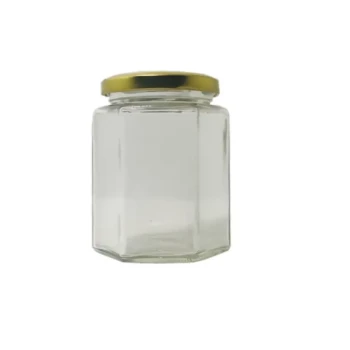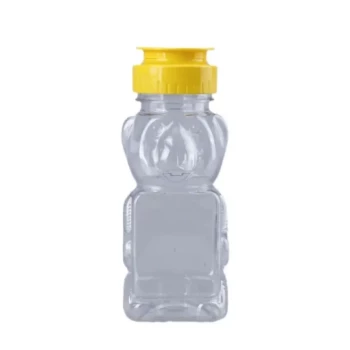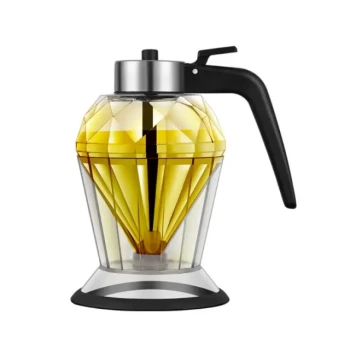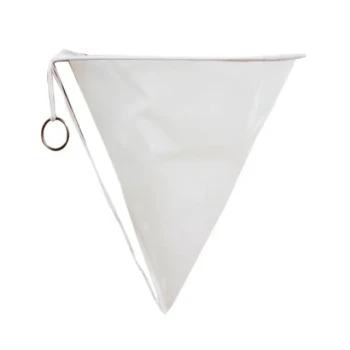The primary benefits of using glass jars for honey are superior preservation of flavor, enhanced product presentation, and unmatched material purity. Glass is an inert, non-porous material, meaning it will not react with the honey or allow external moisture and gases to seep in. This protects the honey's delicate taste and aroma while its crystal clarity showcases the product's natural color and quality to the consumer.
Choosing a container for honey is about more than storage; it is about protecting the product's fundamental integrity. Glass is the definitive choice for preserving honey's authentic flavor and aroma because it is chemically inert and impermeable, ensuring the honey you package is the exact honey your customer tastes.

The Core Principle: Preserving Purity and Flavor
The most critical function of any honey container is to maintain the product's quality over time. Glass excels in this area due to its fundamental material properties.
An Inert Barrier Against Contamination
Glass is chemically non-reactive. It does not interact with its contents, so there is no risk of chemicals leaching into the honey or the container imparting any off-flavors or odors.
This ensures the authenticity of the flavor profile is perfectly preserved, which is critical for high-quality, artisanal honey where delicate floral notes are a key feature.
Impermeable to Gases and Moisture
Honey is hygroscopic, meaning it can absorb moisture from the air. Excess moisture can increase the risk of fermentation.
Glass is non-porous, creating a superior barrier against moisture and atmospheric gases. When properly sealed, a glass jar protects the honey from environmental factors that could degrade its quality or texture.
The Advantage of Unmatched Presentation
For many consumers, the purchasing decision begins with visual appeal. Glass packaging communicates quality before the jar is ever opened.
Showcasing Natural Quality
The high transparency of glass allows the natural color, clarity, and texture of the honey to be seen clearly. This visual inspection is a key factor for customers in assessing the quality of the product on the shelf.
A Premium Aesthetic
Glass jars have an elegant, high-end feel that elevates the perceived value of the honey. This premium positioning can justify a higher price point and appeals to consumers seeking natural, high-quality products.
Understanding the Trade-offs: Glass vs. Plastic
While glass offers superior preservation and presentation, it's essential to understand its trade-offs compared to the most common alternative, plastic.
Durability and Weight
The primary disadvantage of glass is its fragility and weight. It is more susceptible to breakage during transport and handling, and its heavier weight can increase shipping costs.
Plastic, by contrast, is lightweight and far more durable, making it a practical choice for shipping over long distances or selling in environments where breakage is a concern.
Cost Considerations
Generally, plastic containers are less expensive than glass jars. For large-scale producers focused on minimizing costs, plastic can be a more economical packaging solution.
The Perception of Quality
Despite its practical advantages, plastic does not convey the same premium quality as glass. The choice between them often comes down to balancing the budget and logistics against brand positioning and the promise of purity.
Making the Right Choice for Your Goal
Selecting the right container depends entirely on your priorities for your product and your business.
- If your primary focus is absolute purity and flavor preservation: Glass is the unequivocal choice due to its inert and impermeable nature.
- If your primary focus is premium branding and on-shelf appeal: The clarity and classic feel of glass directly support a high-quality, artisanal product image.
- If your primary focus is minimizing shipping costs and breakage: Lightweight and shatter-resistant plastic is the more practical and economical alternative.
Ultimately, the right container not only holds your honey but also communicates its quality and protects its integrity from the hive to the home.
Summary Table:
| Benefit | Key Advantage | Ideal For |
|---|---|---|
| Flavor Preservation | Chemically inert & impermeable | Protecting delicate, artisanal honey |
| Premium Presentation | Showcases natural color & clarity | High-end, artisanal branding |
| Material Purity | No chemical leaching or off-flavors | Ensuring product integrity & safety |
| Trade-off | Heavier & more fragile than plastic | Brands prioritizing quality over logistics cost |
Ready to package your honey with the quality it deserves?
At HONESTBEE, we supply commercial apiaries and beekeeping equipment distributors with high-quality, wholesale glass honey jars. Protect your product's flavor and elevate your brand's presence on the shelf with packaging that communicates purity and quality.
Contact our experts today to discuss your wholesale glass jar needs and request a quote!
Visual Guide

Related Products
- Hexagonal Glass Honey Jars with Metal Lug Caps Elegant Versatile Packaging
- Inverted Squeezable Honey Jar with No Drip Flip Top Cap for Easy Pouring
- Classic Drum Shaped Glass Honey Jar with Airtight Lid
- Classic Honey Bear Jars with Flip Top Dispensing Cap for Liquid Sweeteners
- Pneumatic Double Nozzle Honey Filling Bottling Packaging Machine
People Also Ask
- What factors should be considered when choosing honey packaging? Optimize for Brand, Operations & Market
- How many jars of honey do you get from a hive? Unlock Sustainable Harvesting Secrets
- What are the advantages of using glass jars for honey packaging? Preserve Purity & Elevate Your Brand
- What are the common types of honey packaging? A Guide to Glass, Plastic, Pouches & Tins
- What is the best way to jar honey? Preserve Quality with the Right Container



















